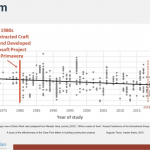Touchplan recently formed a collaboration with Topdeck, a leading provider of end-to-end, visual intelligence solutions that enables general contractors and developers to capture, manage, and analyze their assets and turn the collected data into valuable business insights.
We sat down with Mitchell Ersek, Head of Sales and Business Development at Topdeck, to learn more about the company and its collaboration with Touchplan.
I would love to learn more about Topdeck and the motivation for starting the company?
We started as a company called Aeromana, working with tethered drone systems. That was back in 2015 – 2016 when drones began to come around. This was also before I joined the company. Back then, the drone market was progressing a lot. However, we started to run into several issues with the FAA; regulations were developed and an on-premise pilot was required for tethered drone operation. These new regulations defeated the purpose of our solution at the time. The challenges sparked a switch in focus from the tethered drones to determining a better way to provide our solution to construction sites.
Since our focus was on the construction industry, we wanted to find a way to achieve the same results as a drone would, with regard to visual intelligence solutions, on a construction site. With large commercial construction, you see a lot of tower cranes. Or, the construction site is within the vicinity of other vertically large buildings, thus giving you two options to mount cameras and achieve a good vantage point. Topdeck’s goal was always to provide a more in-depth analysis of what was happening on jobsites, and how does one provide that without a proper vantage point of the jobsite? That’s how Topdeck got going. It started with live streaming of a jobsite, archived video, time-lapses, and stuff like that. We slowly evolved into productivity analytics and real-time progress tracking, leading to in-depth jobsite analysis for project teams and upper management. That’s the growth path and where we’re going today.
What has been the reaction from the construction industry to Topdeck versus having to rely on a drone and the requirements that can come with it?
It is a huge weight off the project team’s shoulders to not have to deal with the individual scheduling of drone flights, especially considering the ever-changing nature of construction schedules. The other half of this is that construction doesn’t wait for anything. If a drone pilot isn’t available at the specified date/time, all that data is lost forever. So, to have a system with a constant uptime running in the background is a major plus for our partners.
In terms of adoption, technology in the construction industry has taken off over the past five years. It is sometimes a slow road, but I think we’re just getting started with our capabilities. The market potential is there, as it applies with several ConTechs; you can choose to partner up with Topdeck or potentially be building with outdated project management tools.
One thing I want to step back and ask is; Topdeck cameras aren’t exclusively mounted on a tower crane, correct? If I was building a ten-story building in downtown Boston, that construction site is next to a forty-story building. Can the cameras be mounted on the adjacent building (with proper approval)? Does Topdeck have any instances like that?
Absolutely, and we have a few jobs like that right now. One, in particular, is in downtown Los Angeles. The building will be around a 56-story building, and they do have cranes; however, we have occlusions. So, to have full coverage of the project, we’ve got two cameras mounted on the neighboring building that is several stories taller, so it’s not a problem. We are also doing a Cal State Fullerton student housing building where we mounted cameras on the neighboring buildings. It’s not an issue for us at all.
I know you mentioned that you are still in the early stages of adoption, but for those who do use Topdeck, what’s the greater value that your clients are getting?
The bottom line is it’s a real-time feedback loop for the project teams to act quickly and course-correct to save time and money. Topdeck provides the knowledge and insights for how contractors plan their jobsite operations. So rather than setting a budget and then going out there and checking that budget back monthly, not realizing something was missed until it is too late, you’re getting this feedback almost daily. Project teams can check information against the budget line items and see where they are running over. It beats waiting a month and hoping the project is still on budget. The feedback loop Topdeck provides allows quick and accurate decisions to be made without the headaches that typically come with them.
Talk to me about the motivation to partner with Touchplan?
At present, we’ve been focusing on self-perform contractors and concrete subcontractors for this type of process. In the future, we will be working toward looking at Topdeck from the general contractor perspective and analyzing the sequencing of different subcontractors in the high-rise divisions. We’d like to think that those insights can feed into Touchplan’s platform and, in a sense, be making suggestions in terms of where to move the digital scheduling tags. The visual data from Topdeck will support the pull planning process and allow more time, and therefore, money saved on tasks.
What do five years down the road look like for Topdeck?
Our dream is to have fully integrated jobsites with security, outdoor progress tracking, live streaming, and analytics all happening in sync. So rather than going out and hiring several different contractors, we will be one partner to replace them all. It’s an excellent time for companies like ours. As I mentioned earlier, construction technology is a burgeoning market. There’s been a massive boom over the past five years, and I don’t think that’s going to slow down. I firmly believe it’s going to continue growing at a rapid pace as adoption increases. It’s no longer a shiny toy but something that can be used for a cost-benefit/value-add. Construction in the U.S. is a very regional market, so expanding throughout the 50 states is a heavy initiative for us over the next few years. We’re already expanded into France with six current projects and are looking at several more. The five-year plan would be to continue expanding internationally into different markets and be the largest provider of visual intelligence solutions in the construction industry.










